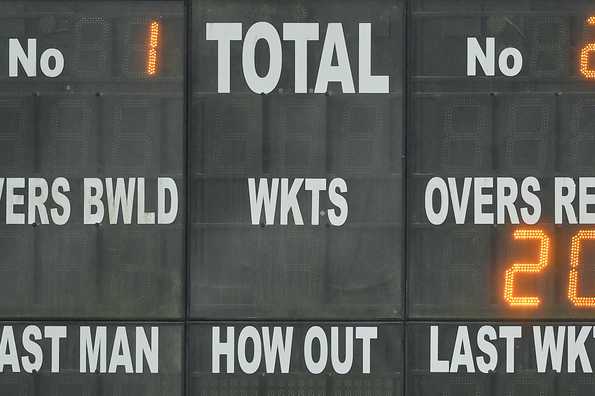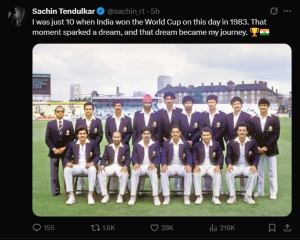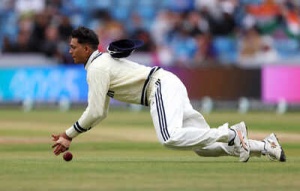The International Cricket Council (ICC) has announced revisions to the playing conditions for Twenty20 Internationals, primarily focusing on adjustments to the PowerPlay rules. The key change involves calculating the length of the PowerPlay to the nearest ball, rather than the nearest over.

Currently, the first six overs constitute the PowerPlay, representing approximately 30% of a standard 20-over innings. When innings are shortened, rounding to the nearest over can significantly alter this proportion.
Under the revised regulations, when the batting team's overs are reduced, the number of PowerPlay overs will be adjusted according to the following table. This table applies to both the first and second innings.
| Match reduced (overs) | Powerplay overs |
|---|---|
| 5 | 1.3 |
| 6 | 1.5 |
| 7 | 2.1 |
| 8 | 2.2 |
| 9 | 2.4 |
| 10 | 3 |
| 11 | 3.2 |
| 12 | 3.4 |
| 13 | 3.5 |
| 14 | 4.1 |
| 15 | 4.3 |
| 16 | 4.5 |
| 17 | 5.1 |
| 18 | 5.2 |
| 19 | 5.4 |
Previously, an 8-over innings included two PowerPlay overs, while a 9-over innings had three. Under the new system, the PowerPlay will conclude after 2.2 and 2.4 overs, respectively, maintaining a closer proportion to the intended 30%.
The ICC communicated to its members that this method has been successfully used in the T20 Blast in England for several years without causing any issues for players or officials and has been accepted by the ICC Men's Cricket Committee. For example, in an 8-over match, the umpire will signal the end of the PowerPlay after two balls of the third over, allowing three additional fielders to move outside the inner circle.
The ICC has also updated its guidelines regarding concussion replacements in Men's T20I matches. Teams must now identify and name potential replacements before the start of the match. This measure aims to create a level playing field by mitigating the home team's advantage of having a larger player pool available. The recommended procedure is to nominate the following replacements to the match referee:
Recognizing that Associate Member teams may face challenges in identifying five specific concussion replacements for each match, particularly when playing overseas, the ICC has implemented a system to accommodate these circumstances.
Teams may nominate a batter as a replacement wicketkeeper. However, the referee may require the nominated batter to keep wicket if used as a replacement. Alternatively, the referee may permit another player from the starting XI to keep wicket, but this is at their discretion and not guaranteed. The primary goal is to ensure a like-for-like replacement, preventing teams from gaining an unfair advantage by introducing another batter.
Teams are also permitted to nominate the same player for multiple categories. For example, if an all-rounder is nominated as both a batter and bowler replacement, the referee may restrict them from bowling if they replace a batter. There is no requirement for concussion replacements to be limited to the playing squad; teams can nominate any eligible player.
The overriding principle remains that concussion replacements should be as similar as possible to the injured player, and the referee will make decisions based on the specific circumstances.
Examples:
In exceptional circumstances, the match referee may consider a replacement player who is not among the nominated replacements.
Regarding the use of saliva on the ball, the ICC has clarified that if any substance, including saliva, is used to alter the ball's condition, the ball must be replaced. However, to prevent teams from deliberately applying saliva to force a ball change, the new clause allows the umpire to decide whether or not the ball should be changed.
These changes currently apply only to men's playing conditions. The women's playing conditions will be updated in October. The new playing conditions will take effect on July 10, 2025.
Newer articles
Older articles
 Evil Eye Amulet: Protective Charm or Portal to Dark Forces? A Cultural Debate
Evil Eye Amulet: Protective Charm or Portal to Dark Forces? A Cultural Debate
 Jayden Seales Fined by ICC for Provocative Gesture During Australia Test Match
Jayden Seales Fined by ICC for Provocative Gesture During Australia Test Match
 Paralympic Archer Sheetal Devi's Viral Video Shows Her Driving Car with Feet, Defying Expectations
Paralympic Archer Sheetal Devi's Viral Video Shows Her Driving Car with Feet, Defying Expectations
 Broad Slams India's Team Selection After Headingley Test Loss, Calls for Roster Tweaks at Edgbaston
Broad Slams India's Team Selection After Headingley Test Loss, Calls for Roster Tweaks at Edgbaston
 Umpire Controversy Erupts: West Indies Coach Sammy Questions Holdstock's Consistency in Barbados Test
Umpire Controversy Erupts: West Indies Coach Sammy Questions Holdstock's Consistency in Barbados Test
 Sachin Tendulkar: 1983 World Cup Win Sparked My Cricket Dream at Age 10
Sachin Tendulkar: 1983 World Cup Win Sparked My Cricket Dream at Age 10
 Jaiswal's Fielding Woes: Ex-India Star Kaif Points to Potential Cause for Dropped Catches in England Test
Jaiswal's Fielding Woes: Ex-India Star Kaif Points to Potential Cause for Dropped Catches in England Test
 Team India's England Tour: Rahul's Sleep Strategy, Coaching Rituals, and Coffee Culture Revealed
Team India's England Tour: Rahul's Sleep Strategy, Coaching Rituals, and Coffee Culture Revealed
 Suryakumar Yadav Successfully Completes Sports Hernia Surgery, Eyes Return to Cricket
Suryakumar Yadav Successfully Completes Sports Hernia Surgery, Eyes Return to Cricket
 Gujarat Cricket Set to Launch T20 League in 2025-26 Season
Gujarat Cricket Set to Launch T20 League in 2025-26 Season